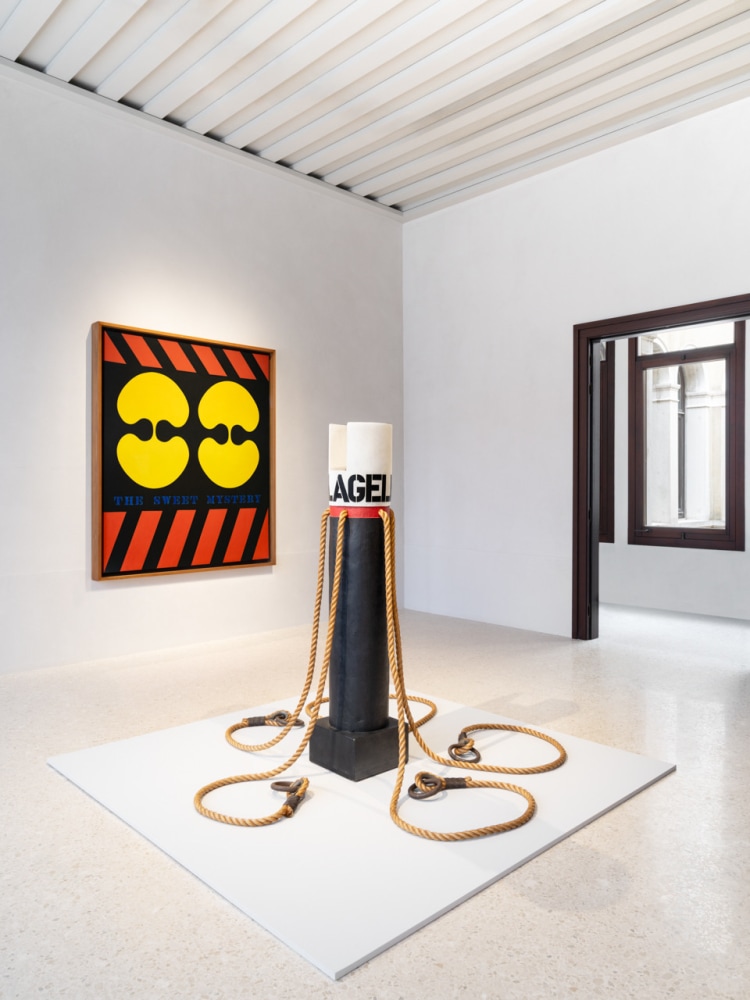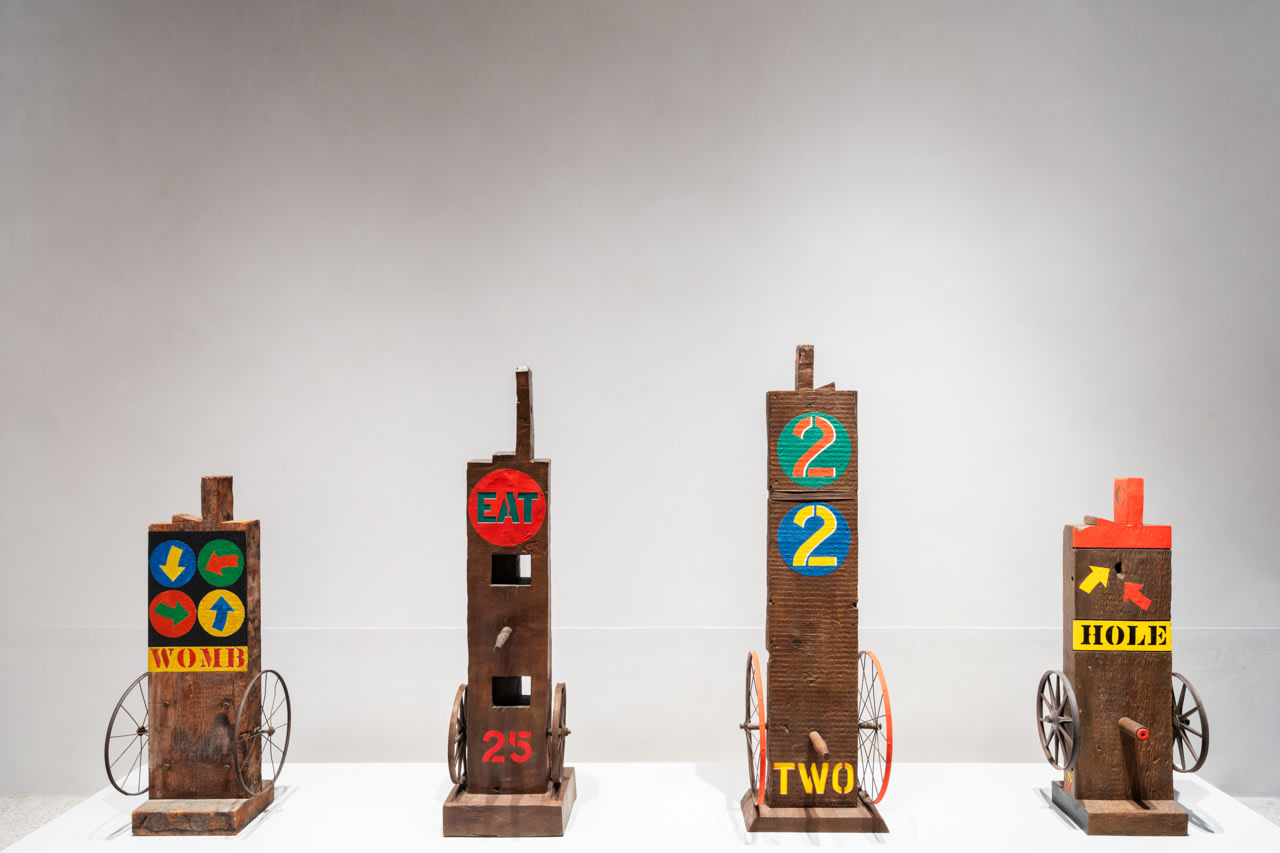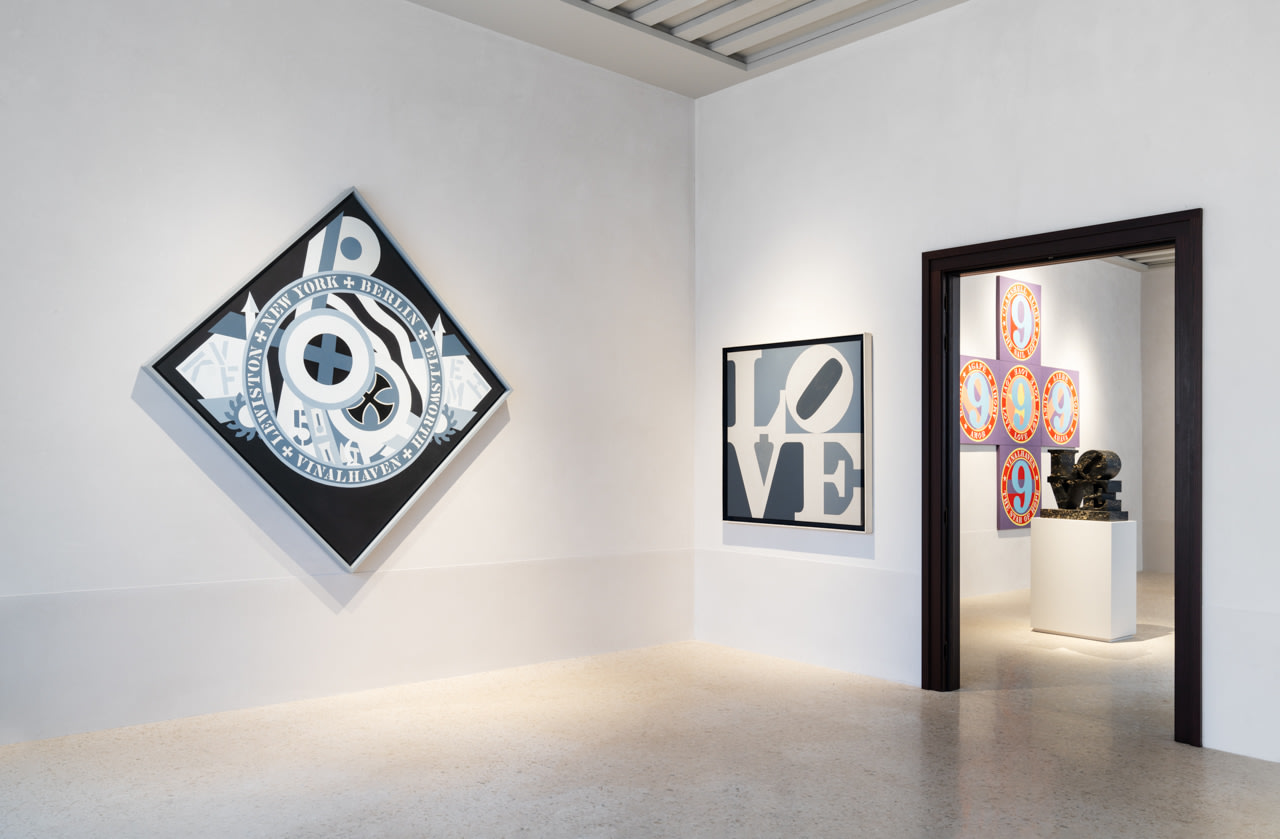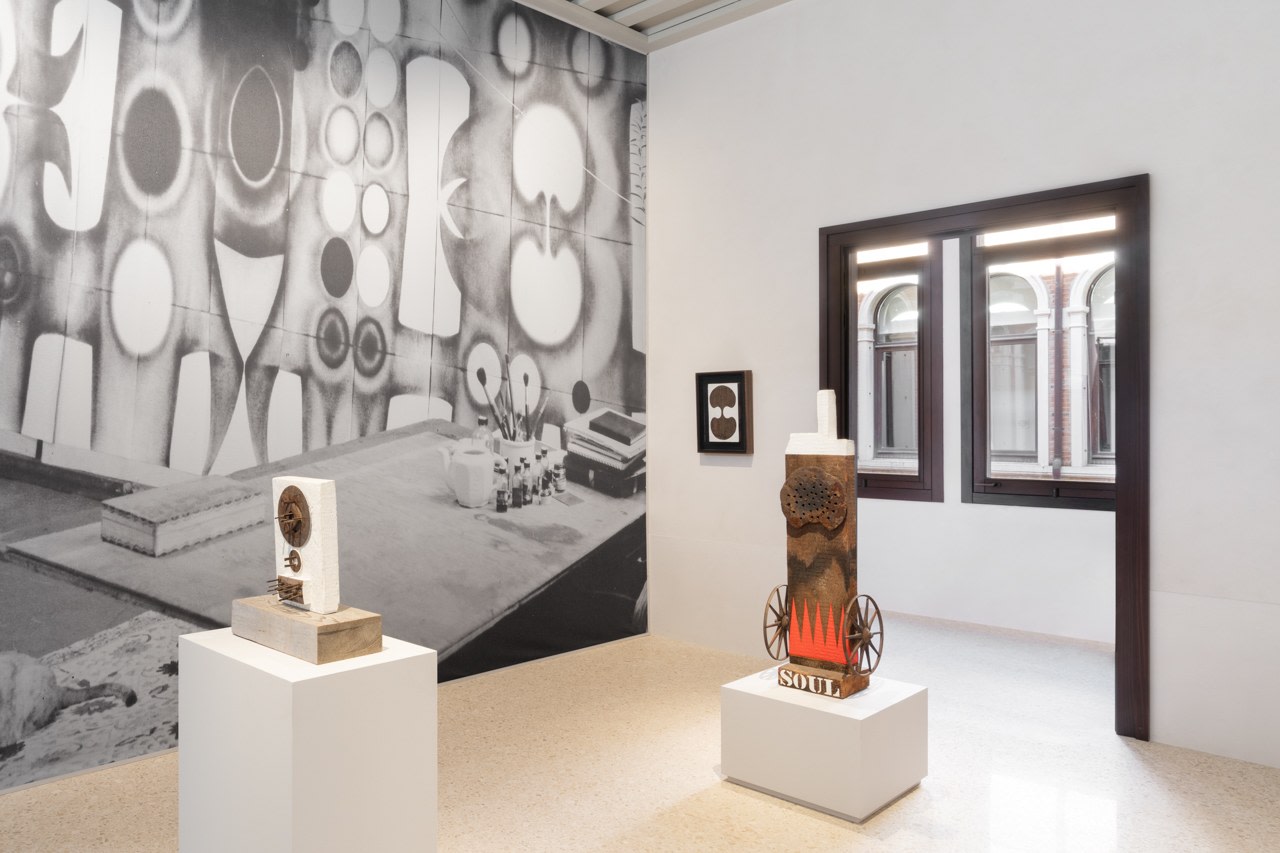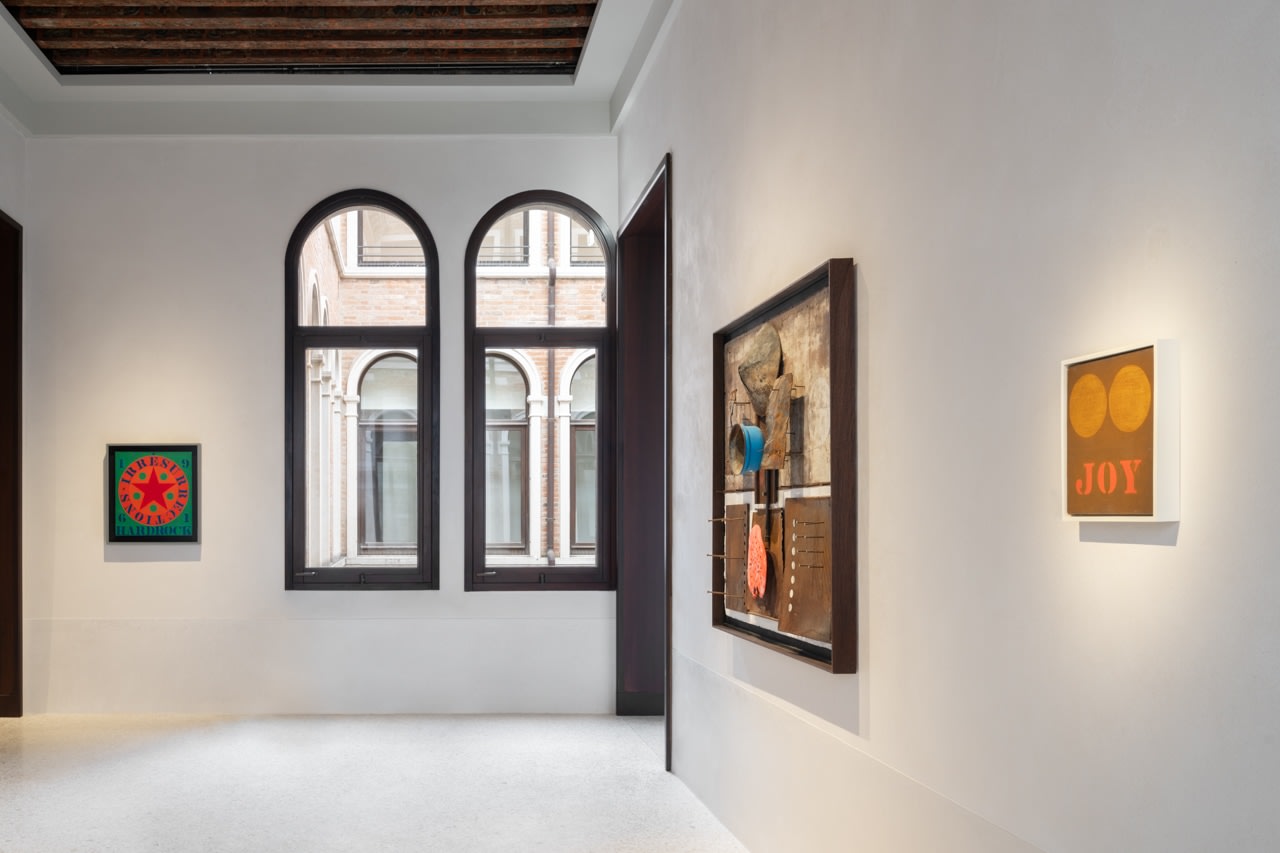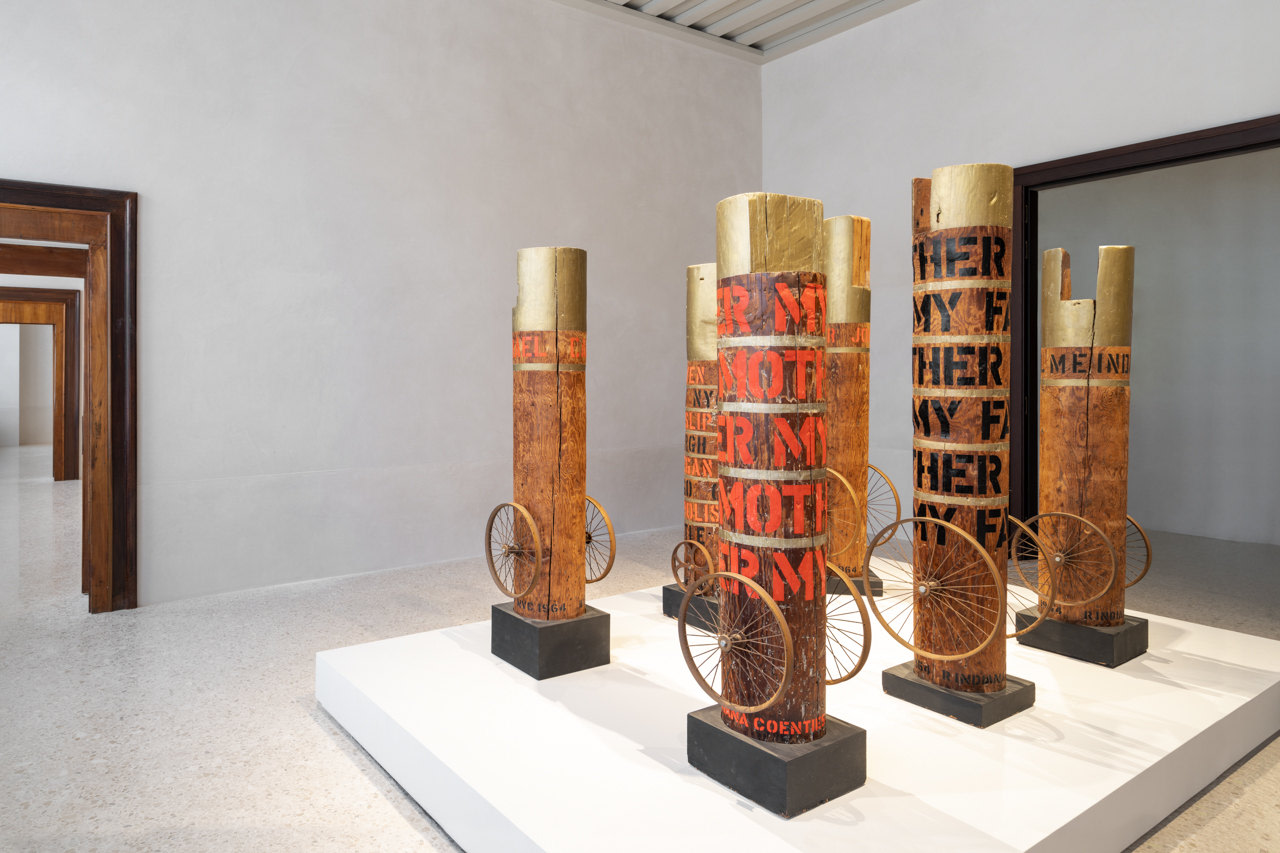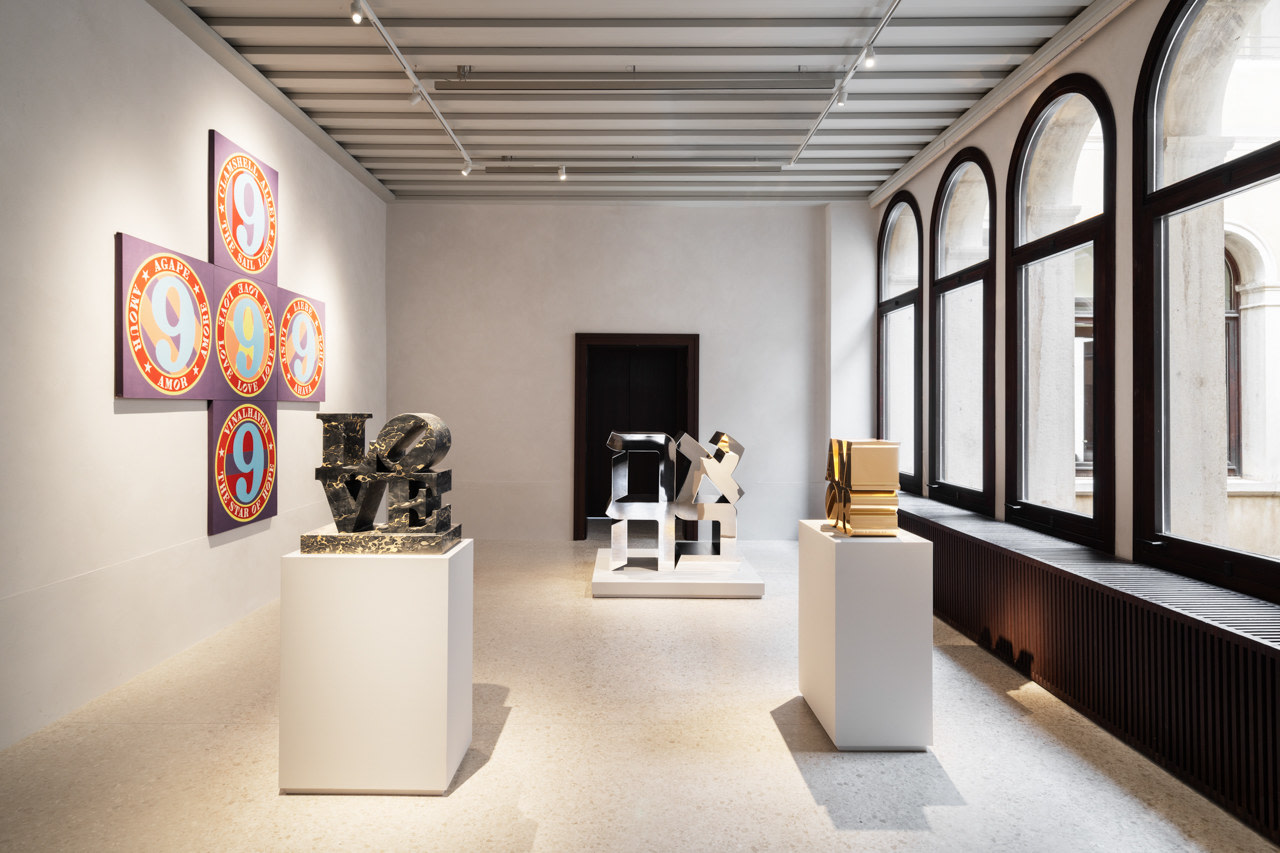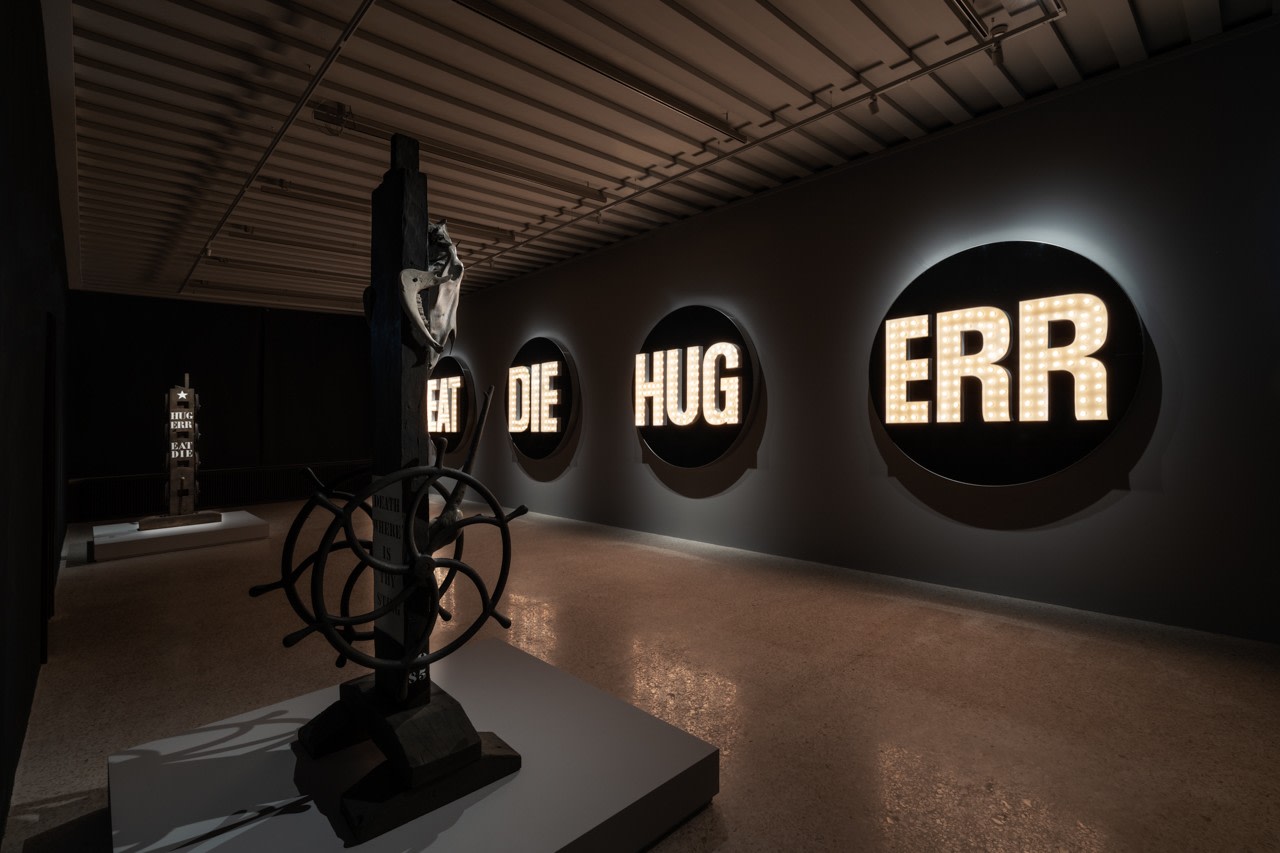The Sweet Mystery: life and death. The hereness and nonhereness….. THE SWEET MYSTERY: song breaking through the darkness.
-Robert Indiana
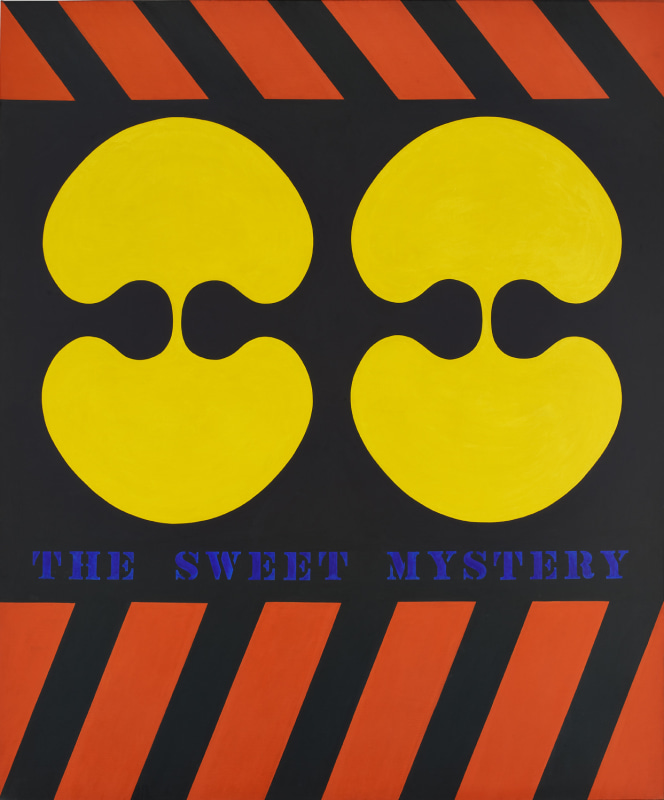
The Sweet Mystery, 1960–62
Artwork: © Morgan Art Foundation Ltd./Artists Rights Society (ARS), NY
Robert Indiana: The Sweet Mystery marks one of the most significant presentations in Italy to date of the work of celebrated artist Robert Indiana (1928-2018), who first emerged as a key figure in the Pop art movement. Indiana had an itinerant childhood in the American Midwest during the Great Depression; he often stated that he lived in 21 different homes by the time he was 17. After high school, he enlisted for military service, knowing that the GI Bill would afford him a higher education afterward. He began his art studies at the Art Institute of Chicago, which led to a summer at Skowhegan School of Painting & Sculpture and further studies at the University of Edinburgh. In 1954, the artist returned from Europe and began the pursuit of an artistic career in New York, still using the name given to him by his adoptive parents, Robert Clark. Two years later, while Indiana was on the job at an art supply store, a chance encounter with Ellsworth Kelly altered the personal and professional trajectory of his young life. He soon found himself living in a loft on Coenties Slip, a forgotten pocket of lower Manhattan where the remains of a bustling maritime past rubbed up against the burgeoning financial sector.
With little funds for art materials, Indiana began creating assemblages using the detritus of the seaport activity around him, while also developing his two-dimensional pictorial language in dialogue with a close-knit community of artist-neighbors including Kelly and other vanguards such as Agnes Martin, James Rosenquist, Lenore Tawney, and Jack Youngerman. In an act of reinvention during this fervent time, he renamed himself after his home state of Indiana. By the early 1960s Indiana was producing bold canvases arranged with pure geometries, text, and numerals in unmodulated color, responding to the visual culture of an increasingly pervasive consumerism. “I am an American painter of signs charting the course,” he said. Embedded with personal memories and biographical detail, his works point to universal questions about the human condition and faith in a turbulent time of great socio-political struggle, while also processing issues of queer identity and the self.
Invert
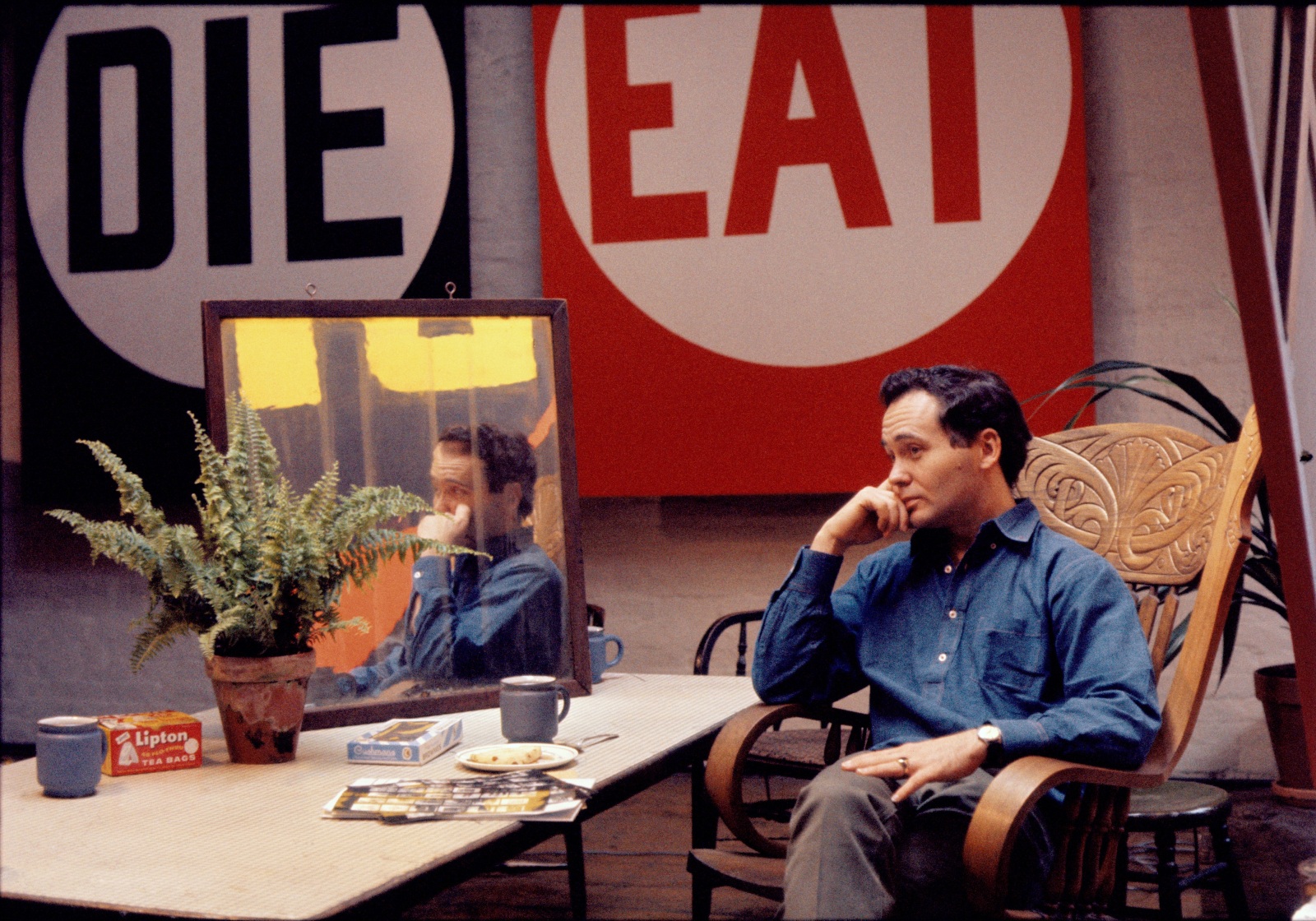
Robert Indiana at his Coenties Slip studio with EAT/DIE (1962) diptych on wall and The Red Diamond DIE (1962) reflecting in a mirror. Photo: ©William John Kennedy. Courtesy of William John Kennedy/Kiwiartsgroup.com
Indiana’s particular form of Pop art extends a line of American radicalism with roots in the transcendentalists of the nineteenth century and the formal experimentation of the modernists, especially from the world of literature. Indiana engaged with the explorations between the self, the soul, and the natural world found in Walt Whitman and Herman Melville. Gertrude Stein’s circular language experiments were an everlasting influence, and Hart Crane, the tragically short-lived poet of the 1920s, provided a model for synthesizing the trajectory of the nation and the rapid changes brought in with the twentieth century from a queer perspective.
In his statement about the painting from which this exhibition takes its name, Indiana wrote, “The Sweet Mystery: life and death. The hereness and nonhereness. The words: among my first cautious uses of them on canvas, here muted and restrained. THE SWEET MYSTERY: song breaking through the darkness.” Through a focused selection spanning more than fifty years of artistic output, this exhibition navigates Indiana’s use of self-referentiality to delve into profound metaphysical questions about the nature of life and frames Indiana for new audiences. It offers a portal to contemplate his distinctive and transcendental Pop perspective as we confront our own pressing existential dilemmas in this century.
Download Exhibition Guide Book as PDF
Invert
My art is a disciplined high dive—high soar, simultaneous & polychromous, an exaltation of the verbal-visual . . . my dialogue.
-Robert Indiana
